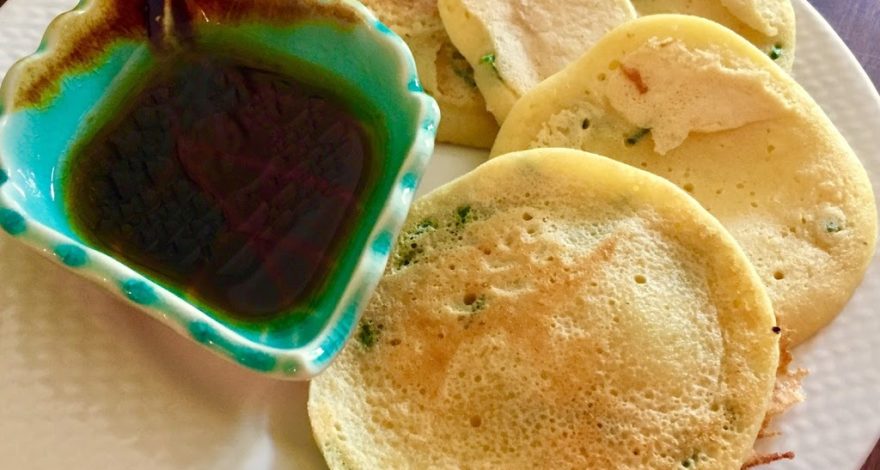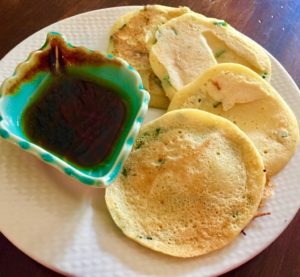Bindae-tteok (빈대떡)~ Mung Bean Pancake
Mung beans are highly nutritious. In a 1 cup serving of cooked mung bean you will find:
- 212 calories
- 14 grams of protein
- 15 grams of fiber
- 1 gram of fat
- 4 grams of sugar
- 321 micrograms of folate (100%)
- 97 milligrams of magnesium (36%)
- 0.33 milligrams of vitamin B1 thiamine (36%)
- 0.6 milligrams of manganese (33%)
- 7 milligrams of zinc (24%)
- 0.8 milligrams of vitamin B5 pantothenic acid (8%)
- 0.13 milligrams of vitamin B6 (11%)
- 55 milligrams of calcium (5%)
Here is a simple vegan recipe my mother made often for our family and now I make for my family. We enjoy eating it for breakfast, lunch or dinner.
Chun’s Bindae-tteok
Ingredients:
1 cup split mung beans
3 cups filtered water
3 cloves of garlic
2 tsp grated fresh ginger
1/2 cup chopped chives
2 tsp avocado oil (or ghee)
Sauce:
2 Tbs tamari
2 Tbs filtred water
1Tbs toasted sesame oil
1 tsp maple syrup
1 tsp grated fresh ginger
1/2 tsp black pepper
Method:
Rinse the split mung beans. Place in a medium sized bowl and let it soak for 6- 8 hours or overnight in the refrigerator. Mung beans will absorb the water and double in size. If you are using whole mung beans, soak it overnight and maybe a bit longer until soft.
Place mung beans and 1 cup of the water in a high speed blender. You may have to add more filtered water later to get it to a pancake batter consistency. Blend on high speed for a couple of minutes. Add garlic, ginger to the blender and blend on high speed until it is a creamy, semi-thick consistency. Add the chopped chives and stir with a spoon.
Heat up a large non-stick skillet on medium high heat. Add oil. Then add a large table spoonful of mung bean batter onto skillet. We make the pancake size from 2inches in diameter to 6 inches in diameter. Cook until edges of pancakes are firm. Flip and cook on the other side for about a 20 seconds to a minute. Larger the pancake, a longer amount of time is required to make sure it is completely cooked.
Serve Bindae-tteok warm and dip it in the sauce. Left over bindae-tteok can be refrigerated then reheated in a lightly oiled skillet for a couple of minutes. Enjoy!

